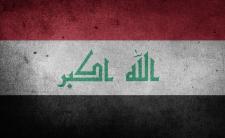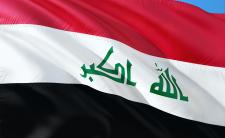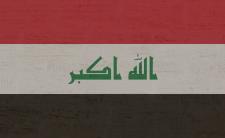The Republic of Iraq lies in an area called Mesopotamia, between the Tigris and Euphrates Rivers. Iraq covers over 438,000 square kilometres of territory north of Saudi Arabia, the Persian Gulf, and Kuwait, west of Iran, south of Turkey, and east of Syria and Jordan. Its population of over 30 million people is predominantly Muslim and Arab, though it is split between the Sunni and Shi’a sects, with the Shi’a dominating. However, there is a significant minority of Sunni Muslim Kurds in the north. The majority of the people live in urban environments, with over 5.7 million people living in the capital of Baghdad.
Constitutional history
Iraq has been a hotbed of political turmoil throughout its history. It has been ruled by the Babylonians, the Hittites, the Kassites, the Chaldeans, the Greeks, the Romans, the Iranians, and finally the Muslims who began their conquest in the early 7th century. The Muslims under Abu Bakr, Muhammad’s father in law, began purging the area of its Christian communities. By 650 A.D., the Islamic conquest was completed, but a divide occurred within the Muslim community that has had a great impact on modern-day Iraq. Some Muslims chose to follow Ali, Muhammad’s cousin and son-in-law, to become the Shi’a Muslims, while others rejected his rule and chose to follow Muhammad, becoming the Sunni Muslims.
The Ottomans ruled the area from 1534 until the end of World War I, when the British and the French divided the former Turkish possessions in the San Remo Conference of 1920. In this agreement, the British were given control over Mesopotamia. The British charged Faisal, a direct descendant of Mohammad, to be the King of Iraq hoping that his leadership would appease the differing Muslim factions. On 14 July 1958, the Iraqi army overthrew the King to proclaim a democratic and Arab government. In 1963, a military coup composed of moderate Arab nationalists took control. This government only lasted until 1968 when the Ba’ath Arab Socialist Party took power in another successful coup, instating Hasan al-Bakr as the new President of Iraq. The governing Revolutionary Command Council passed two interim constitutions in 1968 and 1970, but these constitutions did little to establish any democratic checks on the rule of the Party.
In 1979, al-Bakr resigned his position in favour of Saddam Hussein al Tikriti, who by that point was already wielding most of the political power. Following the Iran-Iraq War in 1989, Saddam allowed elections for a new national legislature and proposed the creation of a new constitution. This constitution was supposed to create a Council of Ministers, lift the ban on political parties, and provide for direct presidential election. However, the Persian Gulf War interrupted this process and permanently stalled the creation of a more democratic constitution. Saddam used his powerful position to install formidable controls over the press and freedom of expression.
An American-led coalition force ousted Saddam on 19 March 2003 in the wake of the 11 September 2001 attacks on the World Trade Centers in New York City. On 15 October 2005, a national referendum approved a new constitution by a majority of 79 percent of the votes. There was originally some concern that the Sunnis would boycott the vote due to their objections over some elements of the document. Most notably, they demanded a constitutional review body that would control the amendment process. The drafting committee agreed to include this body by amendment after the referendum as part of a compromise that led to the Sunni Iraq Islamic Party to back the new constitution and participate in the vote.
2005 Constitution
The 2005 Iraqi constitution was greatly influenced not only by its political history, but also by fears of Islamic extremism and greater federalism leading to separatism. To this end, the Constitution created a strong parliamentary bias in favour of an elected but mainly symbolic President. It proclaimed religious freedom, but guarantees that Iraq is primarily Islamic and Arab. The fears of federalism led the drafters to include specific powers for the national government, which has exclusive authority over foreign policy, national security, fiscal policy, citizenship, water population, telecommunications and the mail, and the census. This national power is divided among the executive, legislative, and judicial branches.
Executive branch
The President of Iraq acts as the Head of State and represents the sovereignty and unity of the country. The election of the President is undertaken by the legislature by a two-thirds vote. Once elected, the President has a 4 year term, with the option for only a single re-election. However, his term may only last as long as the legislature’s. If their term expires before his own, his term carries over into the next legislative session only until the next President is elected within 30 days of the first meeting of the legislature. The President has fairly limited powers, including the power to grant pardons on teh recommendation of the Prime Minister, to ratify treaties after approval by the legislature, ratifying laws, convening the legislature, awarding honours, accepting ambassadors, acting in a ceremonial role as the Commander-in-Chief, and issuing presidential decrees, including the ratification of death penalties.
The President is assisted by the Council of Ministers. The Prime Minister and the Ministers are nominated by the President and approved by a majority vote of the legislature. The Prime Minister holds most of the executive power of the government, with the ability to direct the general policy of the State, to act as the Commander-in-Chief of the Armed Forces, and to oversee the Ministers. The Council itself plans and executes national policy, oversees the functioning of the government and its agencies, proposes legislation, the general budget, and development plans, recommends the approval of some government officials to the legislature, and negotiates international agreements. In sum, it is charged with implementing the law and policy of the State.
Legislative branch
The Parliament is unicameral, consisting of only the Council of Representatives. The number of members is elected according to population, equalling one representative for every 100,000 Iraqis. Currently, there are 325 members elected to 4 year terms, with 8 of the seats reserved for women and minorities. In order for a bill to become law, it must first be introduced by the President, the Prime Minister, 10 members of Parliament, or by a special committee of the legislature, and only then may it be voted upon in the Council of Representatives. The Parliament, in addition to its legislative authority, also has the ability to serve as a check on the other branches. It has the power to monitor the performance of the Government by questioning the President, Prime Minister, and the Minister. The Parliament’s check on the Government is further augmented by their ability to remove its members. The Council of Representatives can pass a vote of no-confidence in any Minister and, on request of the President, in the Prime Minister, forcing them to resign their office. It may not only elect the President, but it may also remove him once he has been convicted by the highest federal court for perjury, violation of the constitution, or high treason. Other powers of Parliament include approving judicial, ambassador, and high government appointments, approving the appointment of Iraqi army officers as recommended by the Cabinet, and consenting to declarations of war and state emergency by a two-thirds majority on a joint request of the President and the Prime Minister.
In addition to the national government, there is also a Federation Council which includes representatives from the regions. The formation, organization, requirements for membership, and functions of the Federation Council are all regulated by the Council of Representatives. It is the task of the Federation Council to handle the regional affairs and responsibilities not assigned to the national government.
Judicial branch
The judicial powers of the Iraqi federal government are divided between a Supreme Court, a federal Court of Cassation or Appeals, a public prosecutor, a judicial oversight committee, and other federal courts created by law. The independence of the judiciary is overseen by a higher judicial council that has the authority to manage and supervise the system, as well as nominate the Chief Justice and members of the Court of Appeals and other judicial officials for appointment by the Parliament. The Supreme Court is the highest federal court, consisting of judges with expertise in Islamic law. The Parliament maintains a check on the judicial branch with the power to determine the number, selection procedure, and work of those judges by a two-thirds vote. The court’s jurisdiction extends to constitutional review and interpretation, hearing cases involving federal law questions, settling disputes between and involving branches of the government and other governments, hearing cases involving the President, Prime Minister, or other Ministers, ratifying election results, and settling disputes between judicial bodies.
The Constitution also provides for the creation of independent commissions, including those for human rights, elections, and public integrity. Each of these commissions is overseen and monitored by the legislature, and there is a public service council with the ability to create more commissions according to need. Some other existing commissions include a communications and media commission, a public audit and federal revenue commission, and a Foundation of Martyrs commission. In pursuance of the agreement with the Sunnis in the passing of the constitutional referendum in 2005, a constitutional commission was also created in 2006 to oversee the amendment process.
Political Challenges
Years after the coalition forces removed Saddam, Iraq still faces many challenges linked to its efforts to create democracy in a multiethnic country. Ethnic tensions have fuelled violence and fears of civil war in this fledgling democratic state throughout its occupation history. Shortly after the invasion was declared a success, insurgent groups drawn mainly from Sunnis bitter at their loss of power began bloody bombing campaigns targeted at civilians and military personnel alike. After a group of Sunni rebels attacked and burned a Shi’a mosque in 2006, the country nearly descended into chaos as Shi’a protestors took to the streets kidnapping and killing Sunni civilians. The Kurds took this moment to break away and create a semi-autonomous region of their own in the north. All of this occurred despite the transfer of governing authority to an interim Iraqi government in 2004, the first multi-party elections in 50 years in January 2005 that brought a Shi’a government to power, and the passage of a new constitution later that year. However, the United States orchestrated a troop surge in 2008 in order to combat insurgent violence. In addition to these efforts, the United States began co-opting the assistance of moderate Sunni tribesman and training the Iraqi army, which succeeded in reducing the number of attacks and casualties. This allowed the US to hand over security efforts to the Iraqi army and withdraw from the cities in 2009. The last American combat troops left Iraq in 2010, and President Barack Obama pledged to have all troops withdrawn by the end of 2011. However, Iraq continues to have difficulties with the Kurds in the north. In January 2009, Iraq held its provincial elections, but no elections were held in the three provinces comprising the Kurdistan Regional Government and Kirkuk province. There is some disagreement over oil revenues coming from Kirkuk and the future of the Kurds in Iraq. Many continue to insist that the Kurds should establish their own state, while others urge the minority to involve themselves in the emerging Iraqi democracy.
One of Iraq’s other major difficulties is the revival of its economy. Under Saddam, most of the country’s economy was based on oil revenues, controlled by the State. After the Iraqi invasion of Kuwait that led to the Persian Gulf War, Iraq failure to comply with UN demands to rid itself of its weapons of mass destruction. This and Iraq’s brutal suppression of popular uprisings by the Kurds in the north and Shi’a Muslims in the south led the UN to impose harsh economic sanctions which greatly hampered Iraq’s economy. Since the fall of Saddam, however, the economy of Iraq has been undergoing a steady revival. An influx of foreign aid and an improved security environment since the troop surge has led to an increase in foreign investment, particularly in energy, construction, and retail services. However, most of Iraq’s economic development depends upon its oil industry. Oil provides 90% of the government’s revenue and represents 80% of its foreign exchange earnings, making it the single most powerful source of wealth for the new nation. While regulations have hampered many foreign companies in the past, many reform minded leaders are seeking to pass new laws creating a more modern industry and a more equitable way to share oil revenues across the nation. One of the biggest hurdles Iraq must overcome is its lack of oil infrastructure, including processing plants, pipelines, and export facilities. These have all been favourite targets of insurgents seeking to disrupt Iraq’s political growth by disarming its economic potential. In addition, corruption and smuggling have been particularly difficult demons for Iraq’s new government in its attempts to modernize its economy and oil sector. These problems have made it difficult for the central government to regulate its oil reserves farther out into the countryside. It has also had a hard time translating its economic growth into tangible benefits for the people. Unemployment remains high and standard of living has not been improving as rapidly as some in Iraq and the international community had hoped. Twenty-five percent of the population remains below the poverty line, and unemployment hovers around fifteen percent. Iraq must make some significant structural reforms before it can realize higher growth, including bank restructuring and private sector development.
System of government under 2005 Constitution
Timeline
| 1917 | Britain takes control of Iraq during World War I |
| 1920 | San Remo Conference divides the Middle East between Britain and France, giving Iraq to the British |
| 1921 | Faisal crowned Iraq’s King by the British |
| 1932 | Iraq becomes an independent state, but remains under British influence |
| 1939 - 1945 | Britain reoccupies Iraq as part of World War II |
| 14 July 1958 | Military coup overthrows the monarchy to form a republic |
| 1963 | Ba’ath Party members stage a successful coup, only to be ousted that same year by another military coup which established a moderate, nationalist Arab government |
| 1968 | A second Ba’ath coup led by General Ahmad Hasan al-Bakr overthrows the government and establishes a Revolution Command Council with Bakr as President, establishes a new constitution |
| 1970 | Government establishes a new provisional constitution, central government and the Kurdistan Democratic Party sign a peace agreement |
| 1974 | Kurds granted more regional autonomy |
| 1977 | Saddam Hussein succeeds Bakr to the presidency |
| 1980-1988 | Iran-Iraq war results in almost one million deaths |
| 16 March 1988 | Iraq accused of using chemical weapons to combat a Kurdish insurgency in the town of Halabjah |
| 1990 | Iraqi invasion of Kuwait prompts US-led coalition forces to intervene in the Persian Gulf War that ended in near disaster for the Iraqi army |
| 1991 | Northern and southern rebellions suppressed by Iraqi forces |
| 1992 | UN establishes a no-fly zone in reaction to Iraq’s suppression of the 1991 rebellions and demands that Iraq hand over its weapons of mass destruction |
| 1995 | UN removes some of its sanctions on oil exports to allow the purchase of food and medicine, Saddam wins a referendum to remain President |
| 1998 | US and UK launch Operation Desert Fox, a joint bombing campaign targeting Iraq’s nuclear, chemical, and biological weapons facilities |
| 1999 | Assasination of Grand Ayatollah Sayyid Muhammad Sadiq al-Sadr, spiritual leader of the Shi’a community, Iraq rejects UN weapons inspectors |
| 2002 | UN weapons inspectors allowed to return to Iraq under international pressure |
| 2003 | UN withdraws its weapons inspectors, US-led coalition force invades Iraq and take control of the country, Saddam captured in Tikrit |
| 2004 | Suicide bomb attacks kills 140 people at Shi’a festival in Karbala and Baghdad, US military siege on Sunni city of Falluja, US transfers sovereignty to Iraqi interim government |
| 2005 | Iraqi elections see the surge of Shia and Kurdish parties, passage of new constitution by popular referendum |
| 2006 | Important Shi’a shrine in Samarra bombed, leading to sectarian violence and hundreds of deaths, Saddam Hussein executed for crimes against humanity by the Iraqi government |
| 2007 | President Bush announces a troop surge intended to create greater security in Iraq after UN report states that over 34,000 civilians were killed the previous year, Iraqi Parliament forms Kurdish and Shi’a alliance to support the new Government of Prime Minister Maliki but fail to include Sunnis |
| 2008 | UK and US begin handing security power back to the Iraqi central government, insurgent violence continues to drop throughout the country |
| 2009 | Shi’a and Kurdish political parties continue to gain in provincial elections, US announces its intent to withdraw combat troops by 2010 and all other troops by 2011, US troops pull out of Iraqi cities |
| 2010 | No party manages to gain a majority in the elections, forcing them to forge a grand alliance including all major factions, but some key appointments went unfilled due to political deadlock |
| 2011 | Iraqi Kurdistan surrounds the city of Kirkuk over oil revenue dispute with national government |
| Branch | Hierarchy | Appointment | Powers | Removal |
|---|



